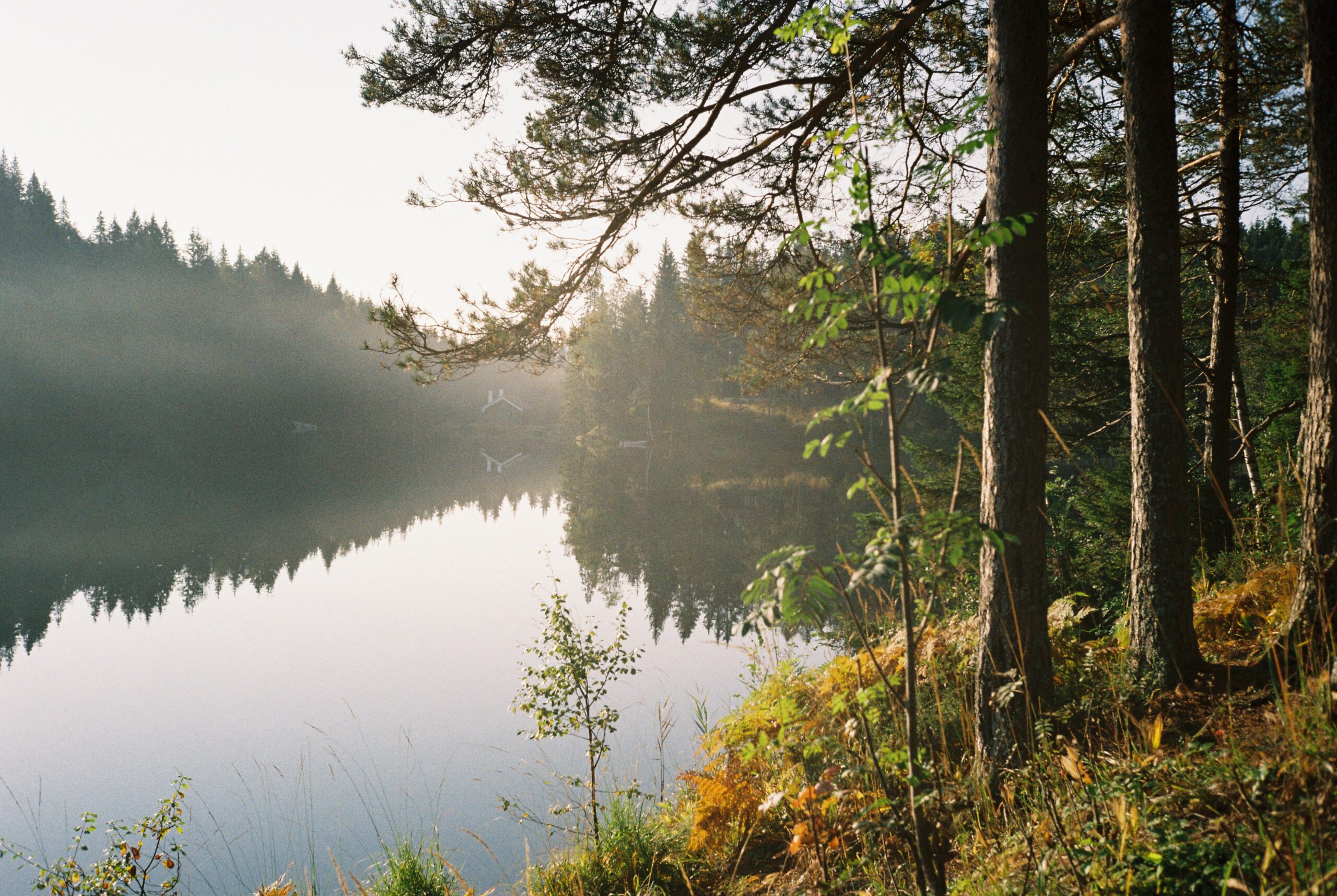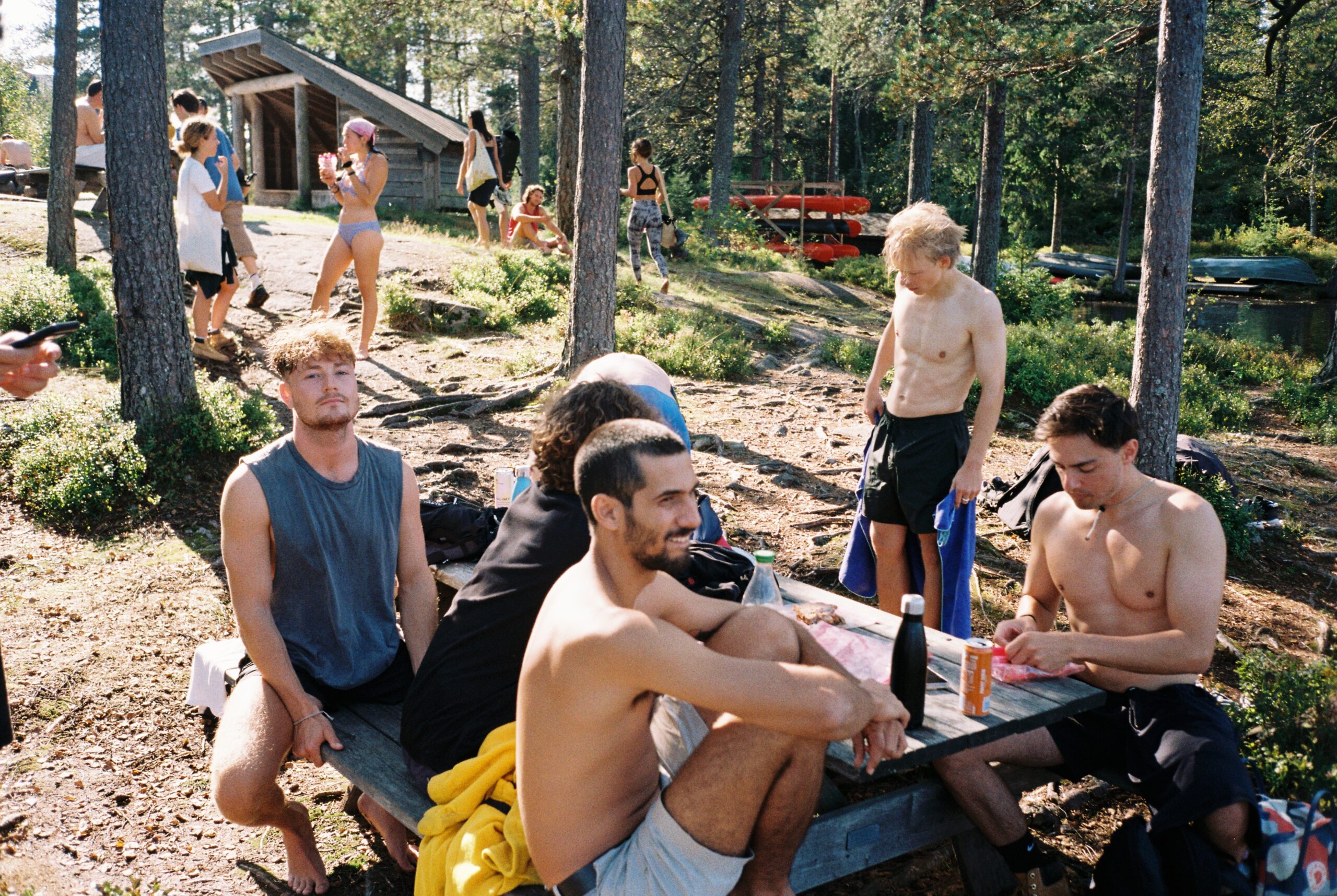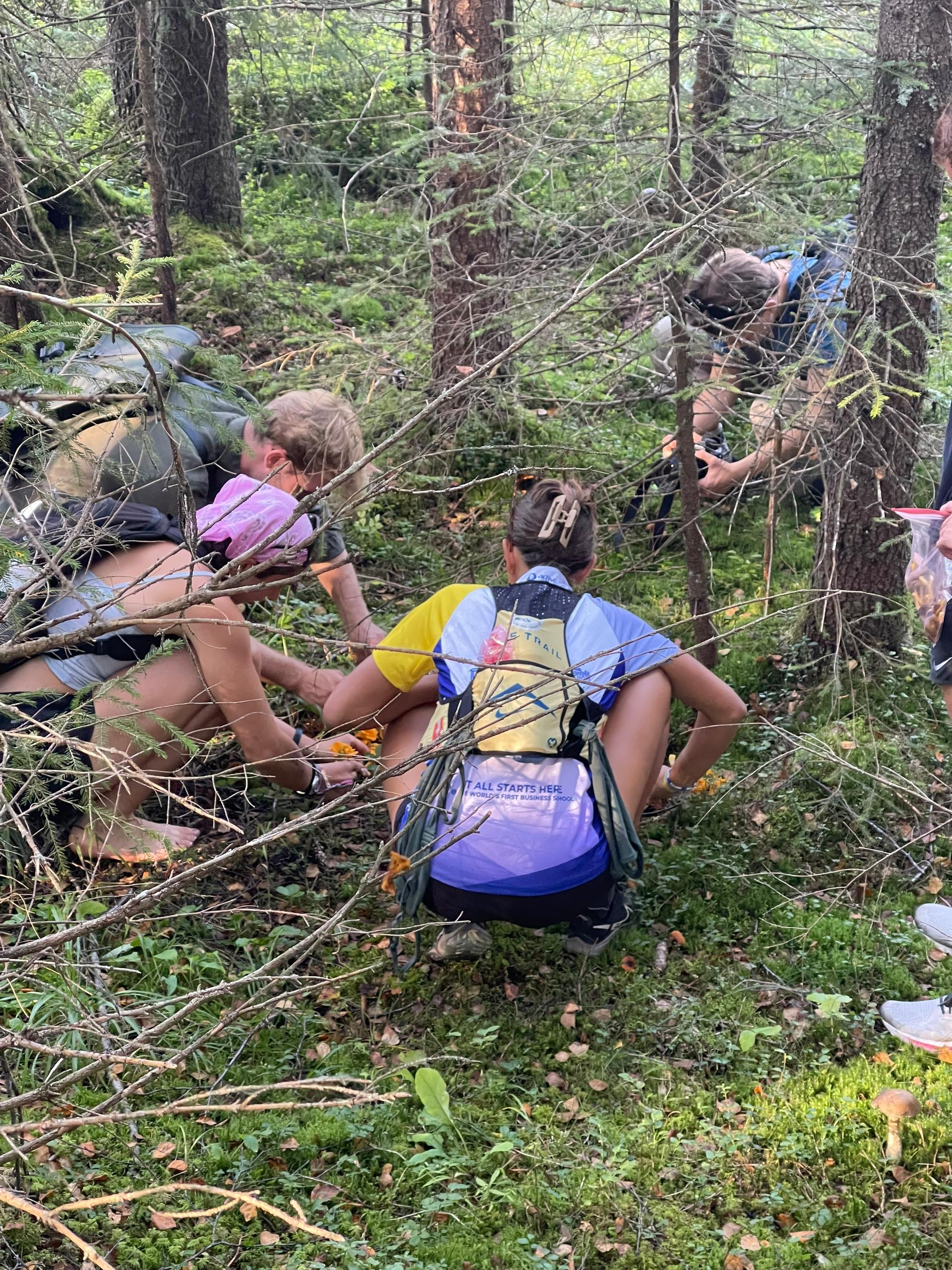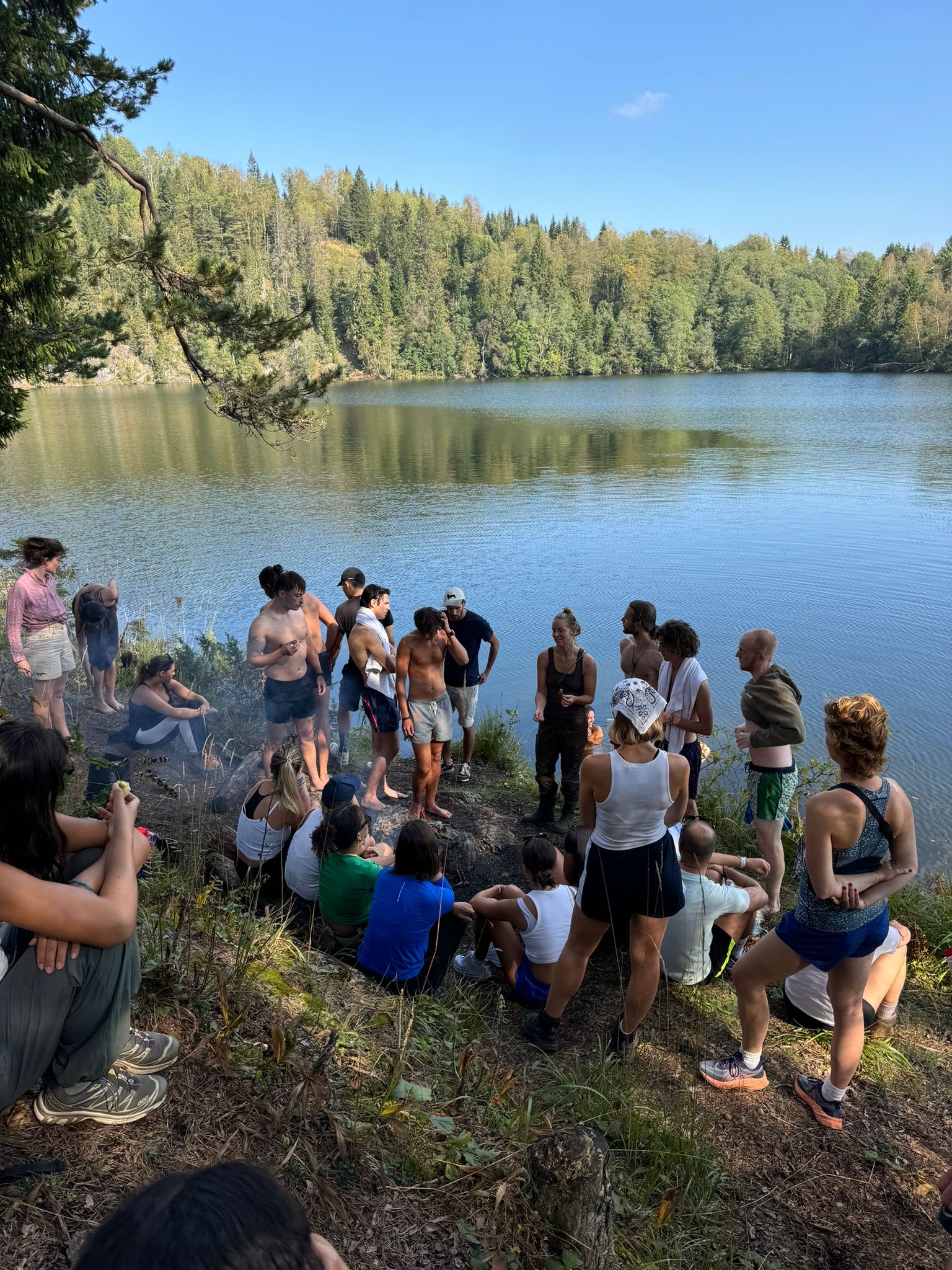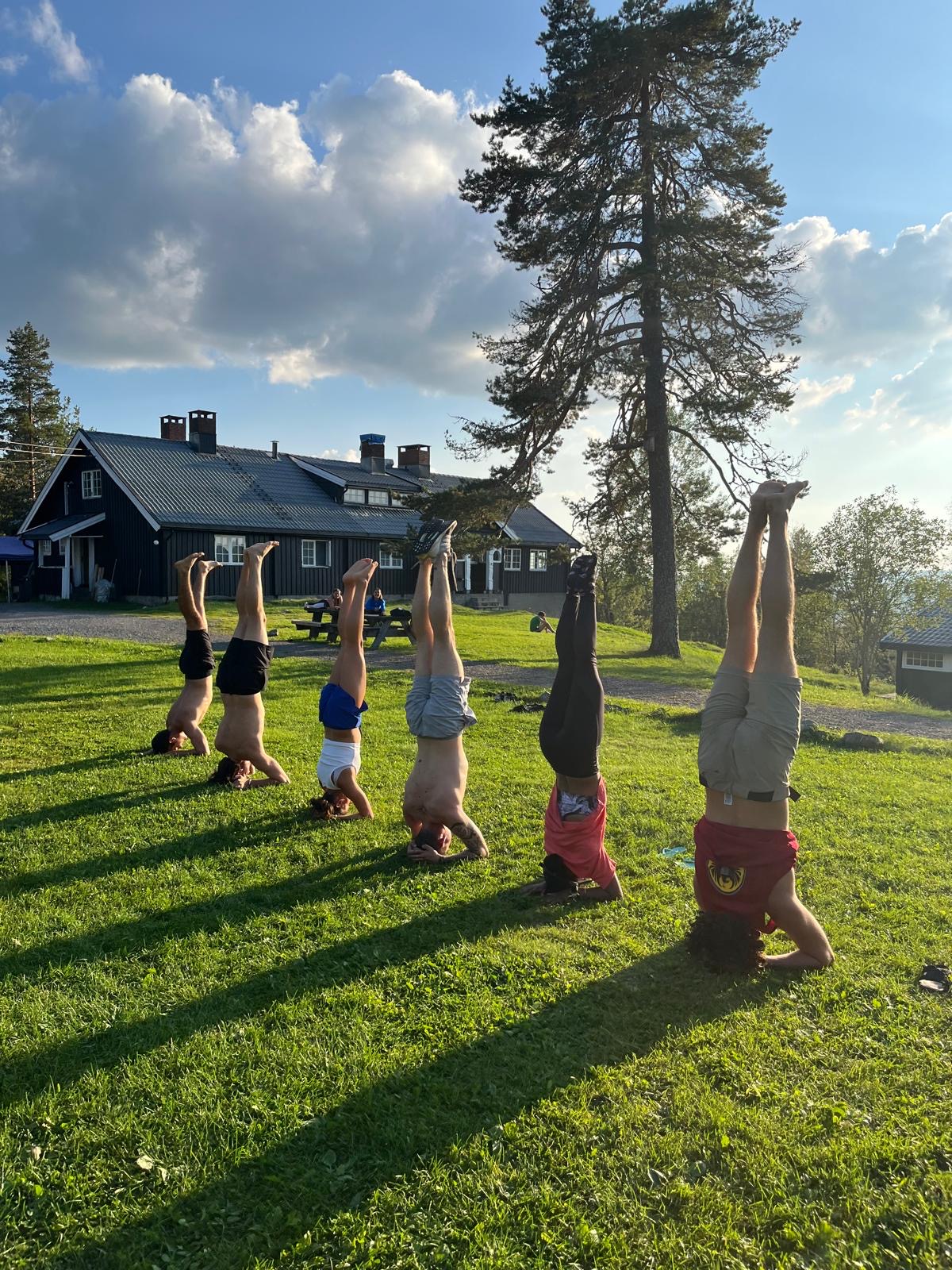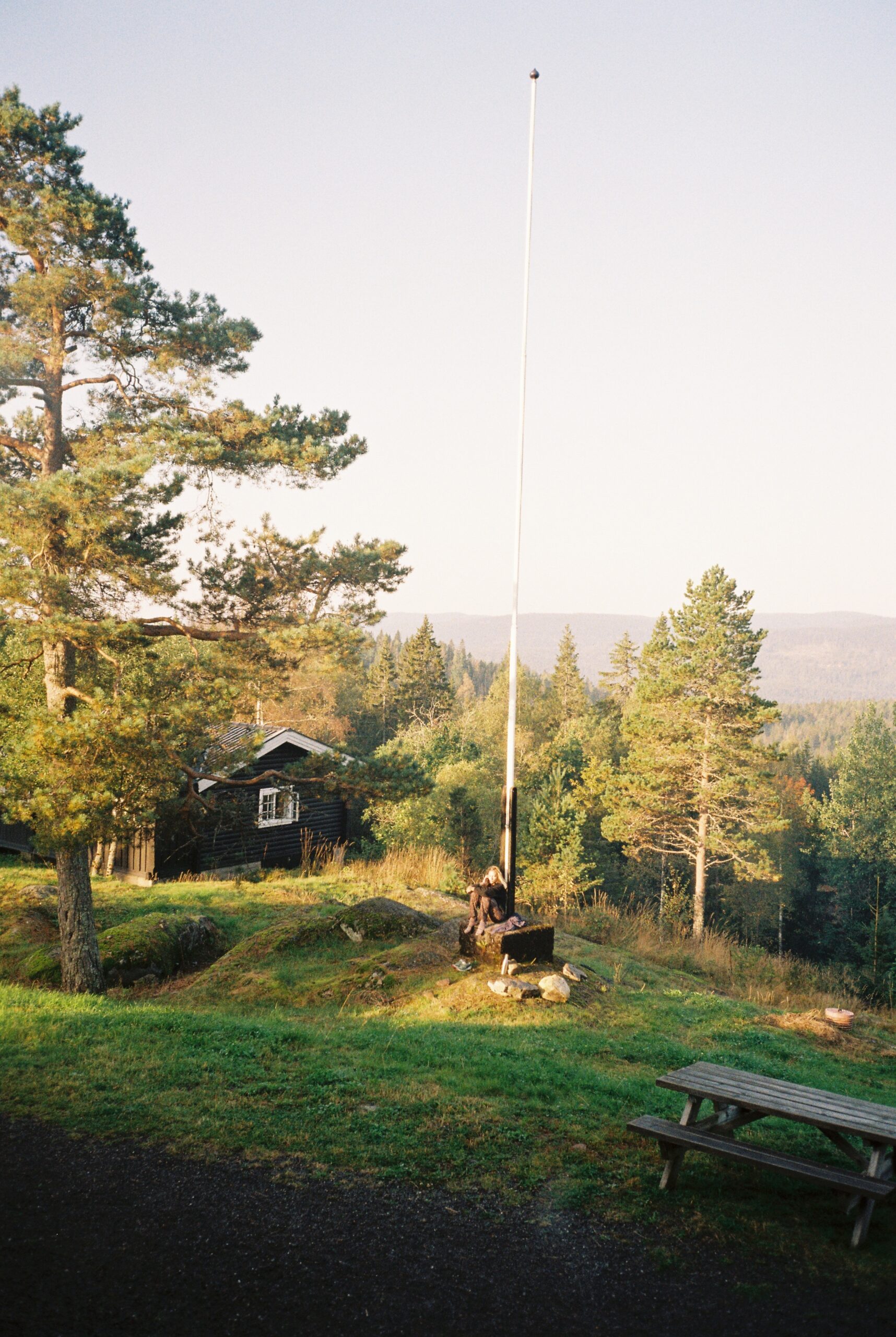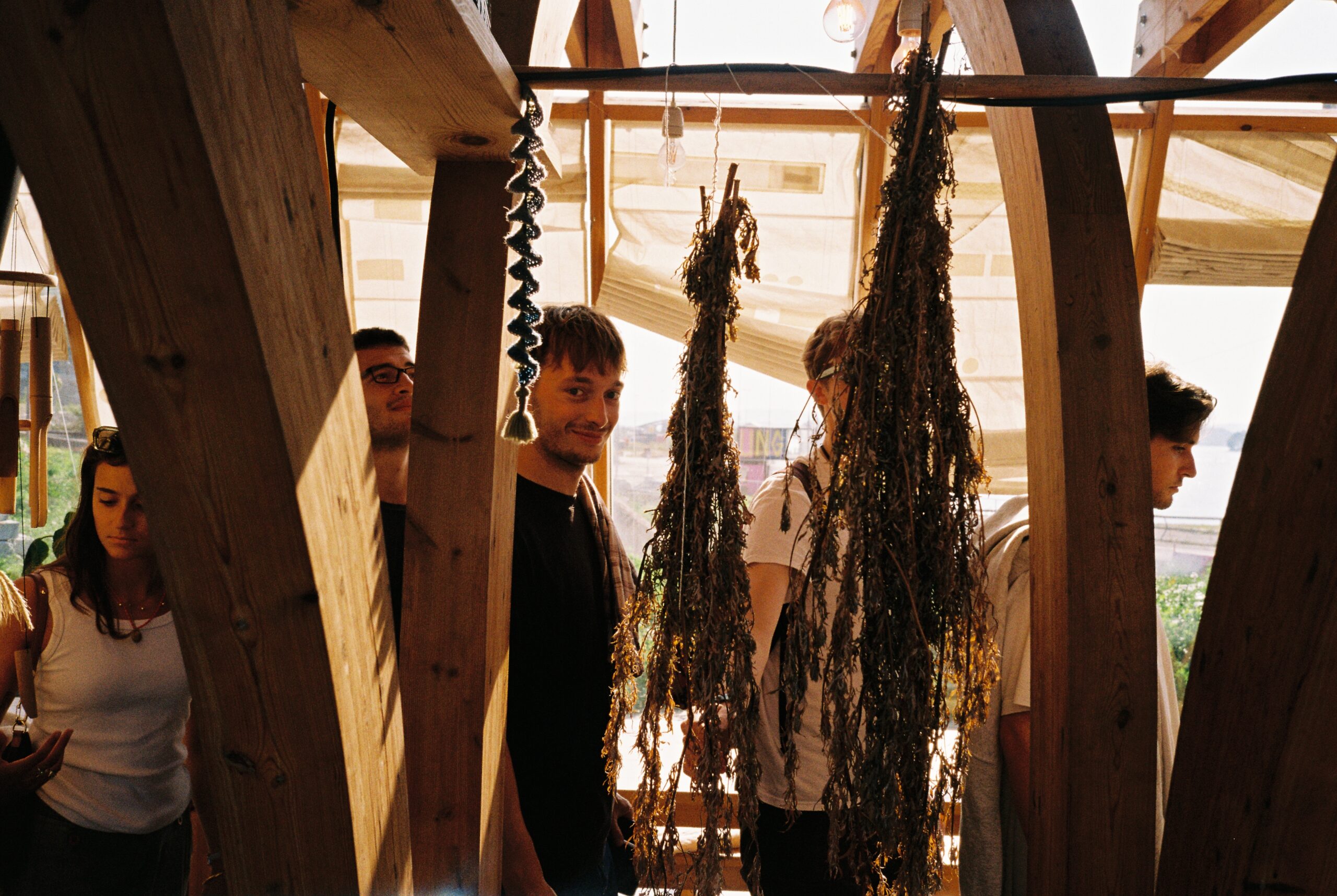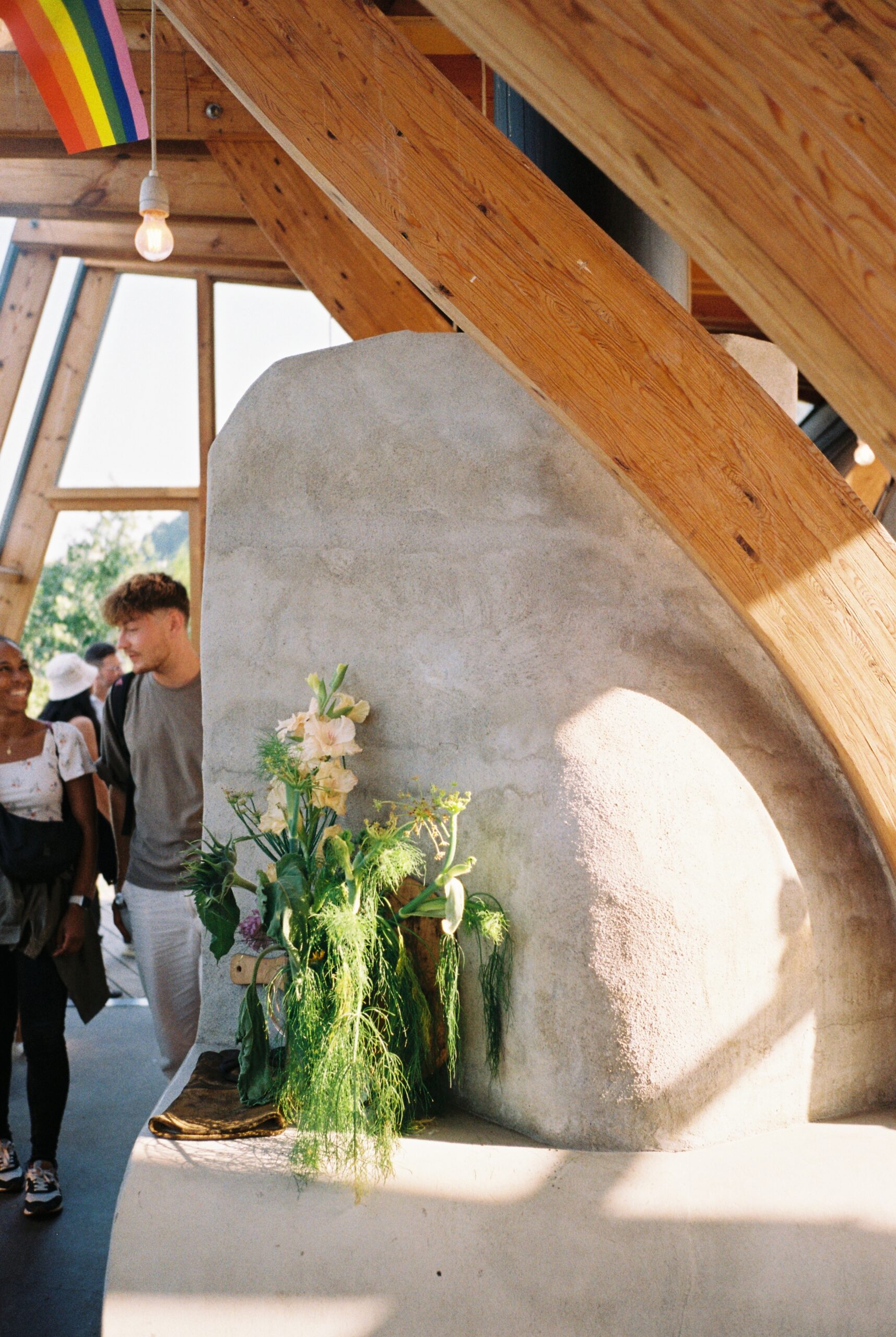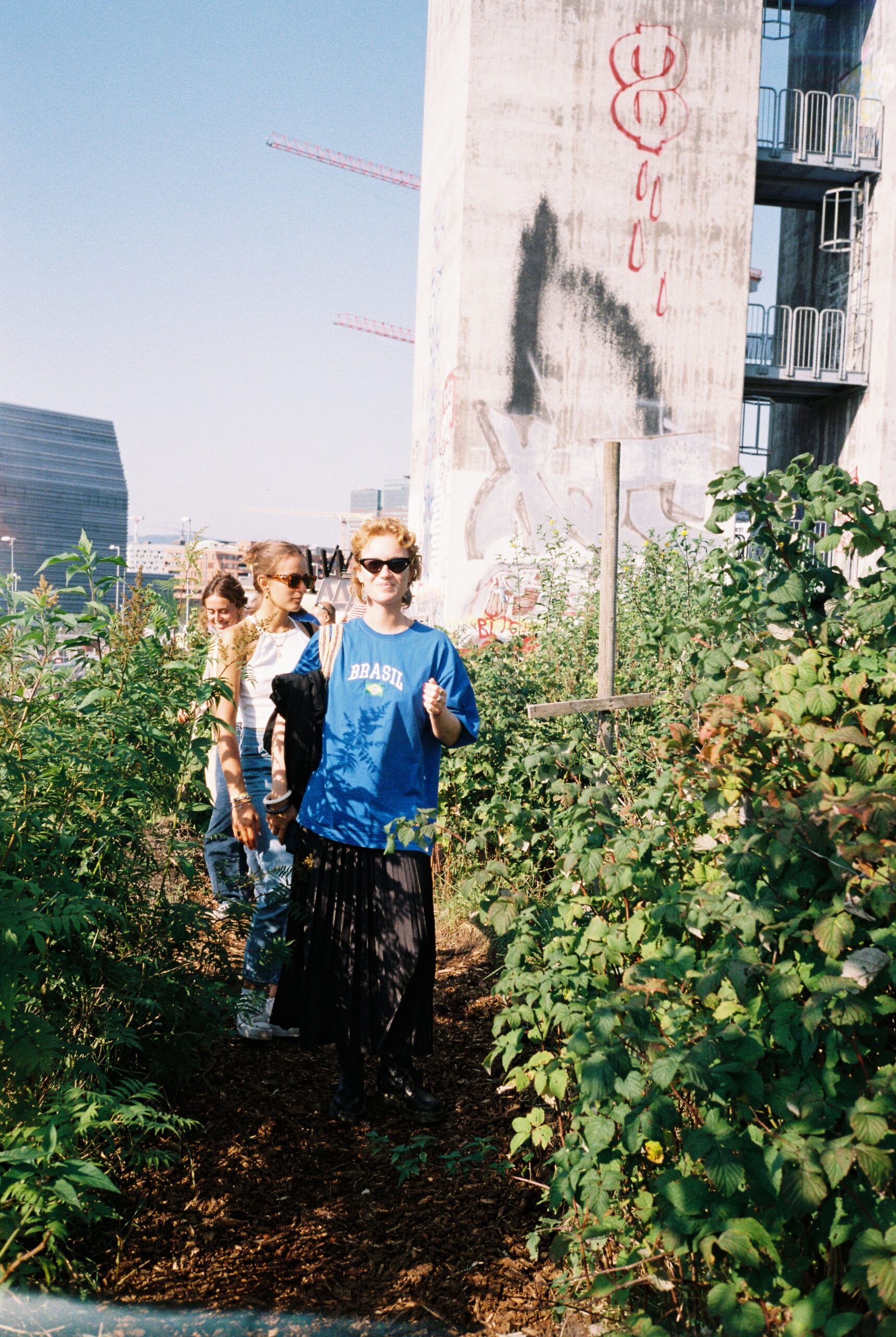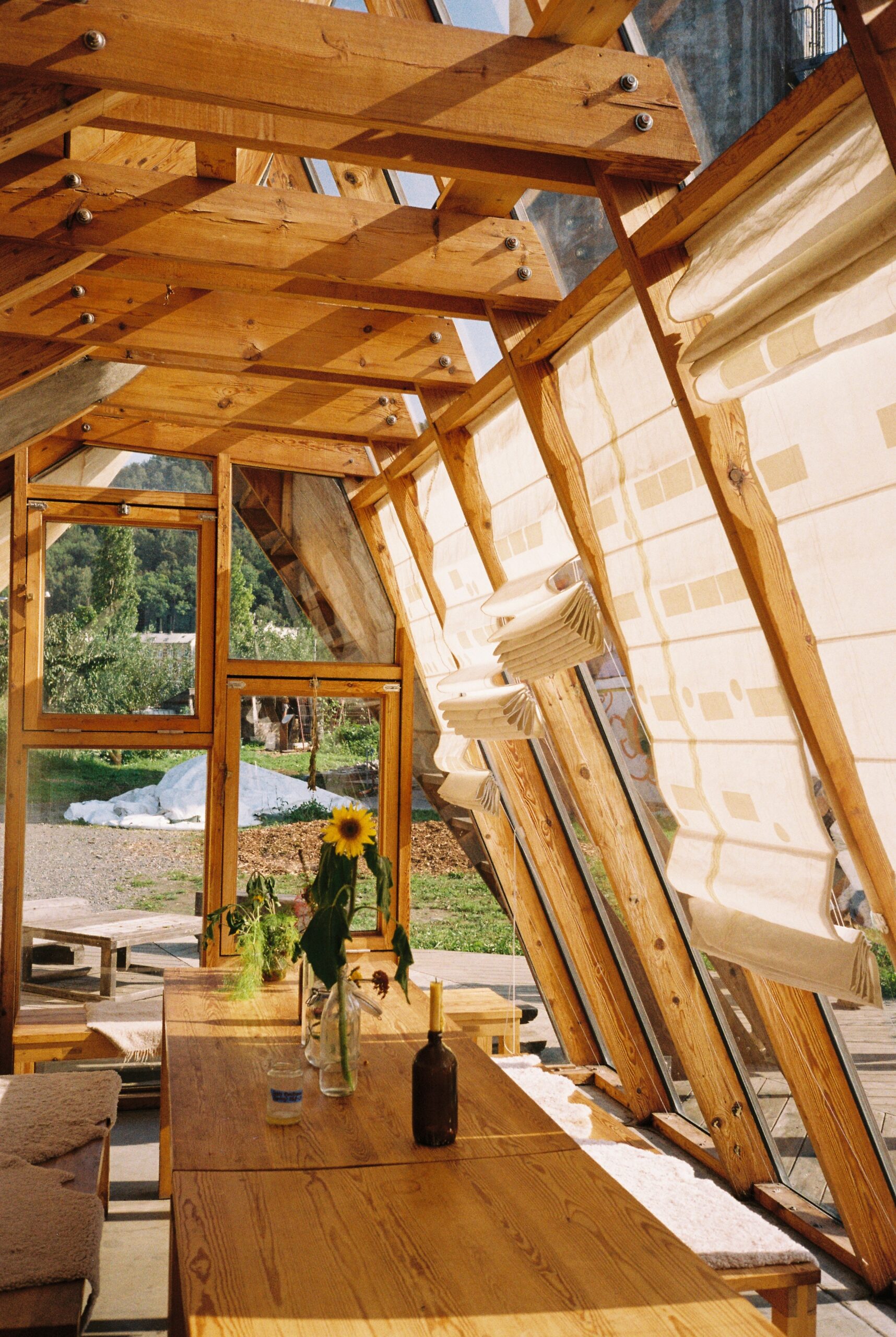Column
Nature as teacher
— ESCP at Studenterhytta
Text: Uma Kurdukar, Robert Zaps & Clemens Friese
Photo: Eva Habanikova
Film: Martin Christopher Lægreid
Fast forward to Oslo, Norway. We went on our study trip to a beautiful place in the forest around 20km north of the Norwegian Capital called Studenterhytta. In all fairness, we were all really excited about the idea of spending time in nature, hiking through the forest, taking a swim in the lake nearby and then hitting the sauna right after. Little did we know that we were in for a completely different type of adventure––co-existing with each other and with nature.
Picture this–– around 50 students across their 20s, accustomed to different lifestyles, living in very close quarters for 24 hours a day, all 7 days of the week with the closest exit to home being a 45-minute hike away through nature. Since this was a study trip and we would have study sessions, we were expecting the usual: Everything is already prepared and all we have to do is to attend the sessions and submit our work on time. But to our very pleasant surprise, there were many tasks left for us to take on. And it all started with the biggest task –– food. Feeding around 55 people (students and organizers) was not an easy task for the 2 lovely people, Janna Konrad and Divyamshu (a father-daughter duo), who volunteered to be our wonderful and absolutely talented chefs for the trip.
Food played a very important role in uniting all of us. Janna and Divyamshu, worked with Cecilie Dawes from Food Studio connecting to farmers like Linda Jolly in Hengsenga Bygdøy and gardener Anne Dirsch from Fokhol biodynamic farm in Stange, to bring us all organic and absolutely fresh vegetables from all organic and even urban farms in Germany and Norway.
From day one, we set up a system for cooking food for everyone. The menu for each day was already decided by Janna and Divyamshu based on what they were able to get from the farms. There was a group of students who volunteered to assist Janna and Divyamshu in cooking the first meal. And it was the responsibility of this group to find four people for the next meal prep and so continued the cycle until the very last meal. We had a variety of incredibly delicious and absolutely fresh food every single day. Some days the food wasn’t enough, whereas on some days there was a lot left over. That’s why we had to be careful of portion sizes served so that everyone got enough food, and if there were any leftovers then people could come back for second servings. This system really showed us how difficult it is to provide everyone with food. If it was tough for a group of around 55 people, you can probably imagine how difficult it must be to provide food for 8.2 billion people worldwide. And that too, we were super lucky to get 100% organic food, which is a privilege very few people have today as it is marketed with a green premium in supermarkets.
During the week we were introduced to so many different passionate people from ecofilosopher Martin Le Mueller, entrepreneur Einar Kleppe Holthe, curator Maria Katarina T. M, psychologist Per Espen Stoknes and artist Tone Bjordam. The program and space was held so beautifully by John Koeckert, Lars Mortensen Lægreid and Thomas Schindler.
A highlight from the week and a great way to connect to nature was the fire-making and forest foraging with Cecilie Dawes from Food Studio. After a short walk from our accommodation we arrived at the already well-known lake we had taken many dips in over the previous days. This was not to change now. We collected some dry wood from the forest floor or broke off some dead branches. The key, however, was to collect some fresh bark from birch trees. High in oils, they will even burn when wet, explains Cecilie to us. Under her lead, we quickly have a strong and crackling fire going. For the ones that jumped in the water, it was ideal to warm up again. So, we all shuffle around the flames that brought us together just like this study trip did. A fire or energy and heat more generally are so easy to take for granted nowadays. At this moment, however, we really appreciated the fire for the heat it provided and also for providing us with a sense of calm and safety.
Around the fire, Cecilie introduced us to the different leaves, berries, and mushrooms that are safe, and delicious to eat and showed us which ones to avoid. With this new knowledge, we put out the fire and started our forest-foraging adventure. Starting out a bit hesitant, not knowing what to pick and what to leave, we made our way deeper and deeper into the forest. After an hour of walking, we had some moments of success. Our reward for this success was another dip in a newly discovered lake after which we ate our packed lunch lakeside. From there we started heading back, not knowing the tour would take us through a beautiful, mossy, rich forest. More and more shoes were coming off the feet to feel the ground and excitement grew with every new mushroom we saw. The group started spreading and our foraging success grew. Soon everyone was on their knees, picking leaves, berries, or mushrooms.
With full bags, dirty feet and a big smile on our face we arrived back at our accommodation to start sorting and cleaning our yield. Energised by this experience, half of the group started playing games, doing handstands or wrestling playfully in the setting sun. Playfulness – this is what the foraging brought out in us. I cannot tell exactly how or why this happened. Maybe, because this was the first time we really bathed in nature for multiple hours on end and we all left our guards and worries, at least for a short time, somewhere back in the forest.
The best part was yet to come: turning our foraged ingredients into dinner. Divyamshu and Janna prepared dough to make fresh cheese Spätzle, an Austrian type of pasta. We complemented this with a fresh pesto made from the leaves we picked and roasted mushrooms as a topping. In the last rays of the sun, we sat outside, with our plates full of delicious food, enjoying this very special and well-deserved meal.
But somewhere in this process, the goal was also to show us how easily healthy food is available around us or how easy it is to grow our own food and become self-sufficient. To show us that this should not be a privilege available only to those with money or their own property where they can grow their own food.
For urban dwellers, this knowledge/space/opportunity now exists in the form of urban farms. We visited one such urban farm called Losæter, in the Bjørvika area of Oslo. Cecile Dawes, being a food entrepreneur all her life, shared her journey with her challenges and achievements. Challenges such as the lacking acceptance in a male dominated agricultural industry and achievements in creating a supporting community that continuously shares their experiences. One of her special moments was when the architects and urban city designers reached out to her to create with a few people this urban farm Losæter. Together they worked on this fusion of art with nature attracting unexpected citizens who wanted to help create this space and community. Today this community educates, calms and binds people together through the playful combination of artsy architecture and a freeing garden.
After arriving back in the “reality” of city life we quickly learned how appreciative we were of the time spent in Oslo. The bond we have created in our class still continues to flourish and even brings joy to outsiders who are trying to understand our communicational signs we picked up on during the week. It is truly a gift that we got to experience this time and place with the most amazing people one could imagine. We are left with gratitude for showing us your world and letting us take part in it, for opening up to us and letting us feel your experiences.
